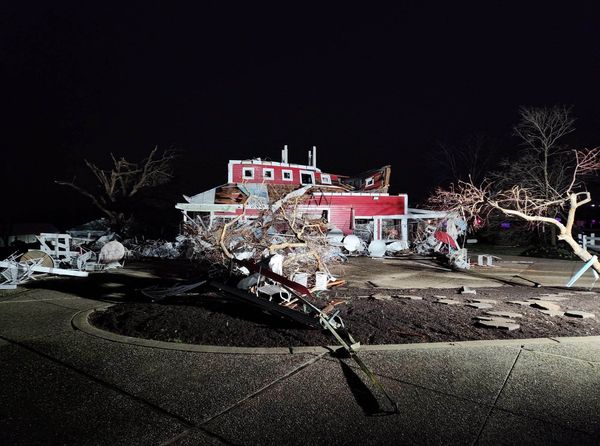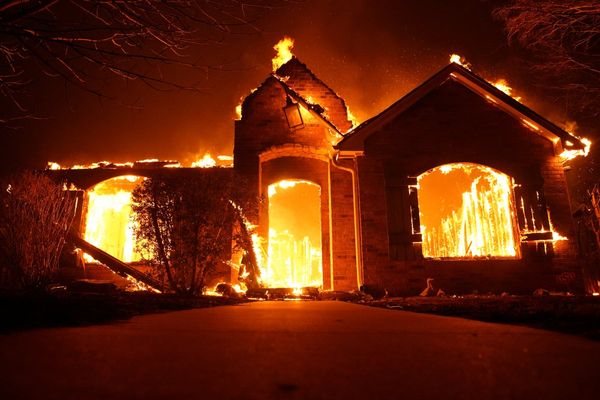The search for survivors in the debris of a collapsed apartment building in Miami continues, causing anguish for the families of the missing.
Miami-Dade County mayor Daniella Levine Cava said the official death toll was just nine, but that 152 people remained unaccounted for in the Surfside building collapse.
Police have named four victims of the collapse: Stacie Dawn Fang, 54, Manuel LaFont, 54, Antonio Lozano, 83, and Gladys Lozano, 79.
So, why is the search effort taking such a long time? And how are the families of the missing coping with the wait?
Why is the rescue effort seemingly so slow?
Six to eight squads of rescuers, two cranes and two diggers are on site to comb though the multi-storey pile of shattered concrete and twisted metal, Ms Caba said.
The teams include experts sent by Israel and Mexico to assist in the search.
Rescuers are sweeping the mound with dogs trained to sniff out humans.
They are also using a microwave radar device developed by NASA's Jet Propulsion Lab and the Department of Homeland Security, which can "see" through solid concrete.
Rescuers still hope they will find survivors in air pockets that may have formed inside the pancaked debris.
Ms Cava said teams had cut a "deep trench" through the pile of twisted debris to assist in the search.
Rescue teams were "incredibly motivated" to find anyone who might have survived the collapse, she said.
Alan Cominsky, chief of the Miami-Dade Fire Rescue Department, said they are holding out hope of finding someone alive, but searchers had to be slow and methodical.
"The debris field is scattered throughout, and it's compact, extremely compact," he said.
"If there is a void space, we want to make sure we're given every possibility of a survivor. That's why we can't just go in and move things erratically, because that's going to have the worst outcome possible."
Nevertheless, he warned, crews had yet to find any signs of life.
"It's an extremely difficult situation," Mr Cominsky said.
Thunder and lightning have forced authorities to suspend search efforts on several occasions since Thursday, fire rescue spokeswoman Erika Benitez told the Washington Post.
Family members of the missing have turned up at the site, hoping to shout messages to loved ones possibly buried deep inside the pile.
Buses have brought several groups of relatives to view the pile and the rescuers at work.
"We are just waiting for answers. That's what we want," said Dianne Ohayon, whose parents, Myriam and Arnie Notkin, were in the building.
The outlook for the families has grown more and more grim, as the slow rescue operation, involving workers sorting nonstop through the rubble in torrid heat and high humidity, carries on.
How are families coping?
Only remains have been recovered since the early hours of the disaster.
Some families of those missing have provided DNA samples to officials.
On Sunday (local time), some took solace in a church, attending Catholic mass at St Joseph's near the site of the towers.
Father Juan Sosa read out a list of parishioners who remained unaccounted for, the Miami Herald reported.
One missing child, 11-year-old Lucia Guara, received her first communion at the church, he said.
Her father Marcus, 52, mother Ana, 41, and sister Emma, 4, are all also missing.
"We will pray for them," Father Sosa said. "And for anyone else you may know."
Therapy dogs have been brought in to help other family members as they endure an agonising wait for news.
The dogs could help victims process their emotions, said Linda Perez, president of Boricuas de Corazon, a nonprofit group dedicated to helping disaster victims.
So far the dogs have linked up with at least four families from Argentina, another from Paraguay, and others who came in from Houston.
"They're having panic attacks or anxiety problems and we have been able to let them work with the dogs, touching the dog, getting their emotions out," Ms Perez said.
One distraught woman asked for extended canine companionship while awaiting the arrival of her daughter from out of state, and was told she could have support around the clock.
"These people are suffering," Ms Perez said.
ABC/wires







